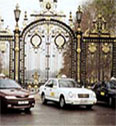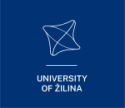
Conference Location
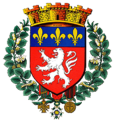 Lyon (Arpitan : Liyon), also known as Lyons (former names include Lugdunum), pronounced [ljɔ̃] in French, is a city in east central France. It is the third largest French city, the first being Paris and the second Marseilles. It is a major centre of business, situated between Paris and Marseilles, and has a reputation as the French capital of gastronomy and a significant role in the history of cinema.
Lyon (Arpitan : Liyon), also known as Lyons (former names include Lugdunum), pronounced [ljɔ̃] in French, is a city in east central France. It is the third largest French city, the first being Paris and the second Marseilles. It is a major centre of business, situated between Paris and Marseilles, and has a reputation as the French capital of gastronomy and a significant role in the history of cinema.
|
Together with its suburbs and satellite towns, Lyon forms the second largest metropolitan area in France after Paris, with 1,783,400 inhabitants at the 2007 estimate, and approximately the 20th to 25th largest metropolitan area of Western Europe. Lyon is the préfecture (capital) of the Rhône département, and also the capital of the Rhône-Alpes région. It is known as the silk capital of the world and is known for its silk and textiles and as a centre for fashion. Lyon is also the international headquarters of Interpol and EuroNews. |

|
Lyon was founded as a Roman colony in 43 BCE by Munatius Plancus, a lieutenant of Caesar, on the site of a Gaulish hill-fort settlement called Lug[o]dunon—from the Celtic sun god Lugus ('Light', cognate with Old Irish Lugh, Modern Irish Lú) and dúnon (hill-fort). Lyon was first named Lughunum meaning the "hill of lights" or "the hill of crows". Lug was equated by the Romans to Mercury.
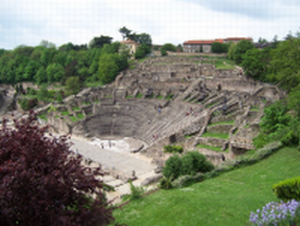
|
The three parts of Gaul mentioned by Caesar met at Lyon. Agrippa recognized that Lugdunum's position on the natural highway from northern to south-eastern France made it a natural communications hub, and he made Lyon the starting point of the principal Roman roads throughout Gaul. It then became the capital of Gaul, partly thanks to its fortunate site at the convergence of two navigable rivers, and quickly became the main city of Gaul. Two emperors were born in this city: Claudius and Caracalla. Today the archbishop of Lyon is still referred to as "le primat des Gaules". |
|
Burgundian refugees from the destruction of Worms by Huns in 437 were resettled by the military commander of the west, Aëtius, at Lugdunum, which was formally the capital of the new Burgundian kingdom by 461. In 843, by the Treaty of Verdun, Lyon, with the country beyond the Saône, went to Lothair I, and later became a part of the Kingdom of Arles. Lyon only came under French control in the fourteenth century. |
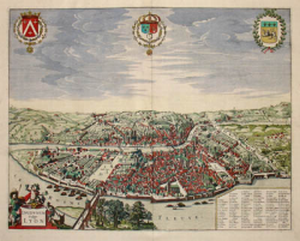
|
Fernand Braudel remarked, "Historians of Lyon are not sufficiently aware of the bi-polarity between Paris and Lyon, which is a constant structure in French development" from the late Middle Ages to the Industrial Revolution (Braudel 1984 p. 327). The fairs in Lyon, the invention of Italian merchants, made it the economic countinghouse of France in the late 15th century. When international banking moved to Genoa, then Amsterdam, Lyon simply became the banking centre of France; its new Bourse (treasury), built in 1749, still resembled a public bazaar where accounts were settled in the open air. During the Renaissance, the city developed with the silk trade, especially with Italy; the Italian influence on Lyon's architecture can still be seen. Thanks to the silk trade, Lyon became an important industrial town during the 19th century.
Lyon was a scene of mass violence against Huguenots in the St. Bartholomew's Day Massacres in 1572.
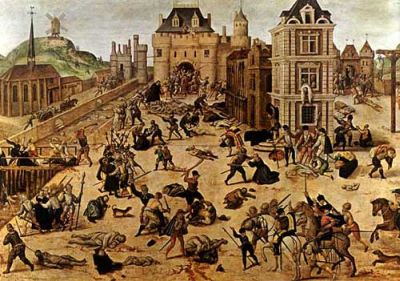
The silk workers of Lyon, known as canuts, staged two major uprisings: in 1831 and 1834. The 1831 uprising saw one of the first recorded uses of the black flag as an emblem of protest.
Lyon was a centre for the occupying German forces and also a stronghold of resistance during World War II, and the city is now home to a resistance museum. (See also Klaus Barbie.) The traboules, or secret passages, through the houses enabled the local people to escape Gestapo raids.
Lyon's geography is dominated by the Rhône and Saône rivers which converge to the south of the historic city centre forming a sort of peninsula or "presqu'île"; two large hills, one to the west and one to the north of the historic city centre; and a large plain which sprawls eastward from the historic city centre.
|
To the west is Fourvière, known as "the hill that prays", the location for the highly decorated Notre-Dame de Fourvière basilica, several convents, the palace of the Archbishop, the Tour métallique (a highly visible TV tower, replicating the last stage of the Eiffel Tower) and a funicular. To the north is the Croix-Rousse, "the hill that works", traditionally home to many small silk workshops, an industry for which the city was renowned. |
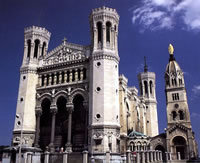
|
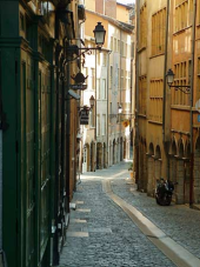
|
The original medieval city (Vieux Lyon) was built on the west bank of the Saône river at the foot of the Fourvière hill, west of the presqu'île. (This area, along with portions of the presqu'ile and much of the Croix-Rousse are recognized as a UNESCO World Heritage Site) On the peninsula (presqu'île) between the rivers Rhône and Saône is located the third largest public square in France, and one of the largest in Europe, the Place Bellecour. Specifically, it is the largest clear square (i.e., without any patches of greenery, trees or any other kind of obstacles) in Europe. This part of Lyon features the broad pedestrian-only Rue de la République which leads north from Place Bellecour. |
|
East of the Rhône from the presqu'île is a large area of flat ground upon which sits much of modern Lyon and most of the city's population. Situated in this area is the urban centre of Part-Dieu which clusters the former Crédit Lyonnais Tower (central France's only skyscraper), the Part-Dieu shopping centre, and Lyon's main rail terminal, Lyon Part-Dieu. North of this district is the relatively wealthy 6th arrondissement, which is home to the Parc de la Tête d'Or, one of Europe's largest urban parks, the prestigious Lycée du Parc to the south of the park, and Interpol's headquarters on the park's western edge. |
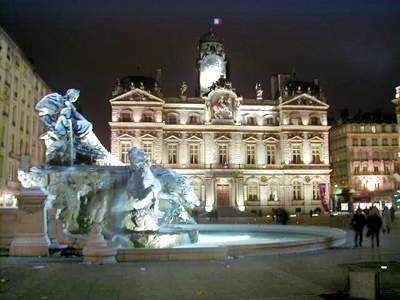
Parts of this text were copied from 
Conference Venue
 |
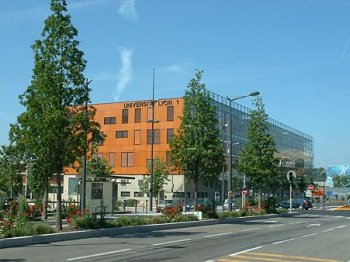
|
The ISC'2008 conference will be held at the Universite de Lyon 1, Site Gerland (click on the link to see a view of the surrounding area - We are in building UCBL. How to reach CESH is provided here CESH |
Getting to Lyon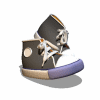
By Plane |
When arriving by plane in Lyon you will land at the Aeroport Lyon Saint-Exupery (website not yet in English). To guide yourself through the airport, here is a link to the different buildings and gates. Trains run from the airport’s TGV station and serve many French destinations, including Paris Gare de Lyon, Marseille and Montpellier (tel: +33.(0)8 3635 3535). Road: Taxi: A taxi rank is located in front of Terminal 1. Taxi information is available from Taxi Aéroport (tel: +33.(0)4 7855 3431). Bus: Several bus services are operated by Satobus (tel: +33.(0)4 7268 7217), connecting the airport to the main cities of Rhône-Alpes; their desk is located in the central area. Or you can rent a car. Directions into Lyon are found here together with a motorway map. If you fly in via Paris and take the TGV to Lyon then you can download this info page |
By Train
|
Lyon has 3 train stations - Saint Exupery - Part Dieu and Perrache. The one you will need to arrive at is the Lyon Part Dieu Station. Information on train services are linked here. From here you can take any form of transport to your hotel or conference site. (see below). One ticket (time-dependent) is valid for all modes of transport. |
By Metro
|
From Gare de Lyon Part-Dieu there is a direct metro link to the conference site. You need to take BLUE line B south till you come to the end station STADE DE GERAND. (see the linked map). This takes about 5 mins from Part Dieu. There is a metro train every 10 mins. It is a five minute walk from the metro station to CESH. |
By Tram
|
Next to the metro system there is also an excellent tram system to get about in Lyon. A map of the tram system is linked here |
By Bus
|
Last but not least there is the bus system and trolley bus system. A map of the bus trolley system is linked here |
By Taxi
|
You can of course also always take a taxi. |
Lyon Maps
Click on the above motorway map to see a stylised map of Lyon.
Useful Links
- Lyon Weather
- Lyon France
- Virtual Tourist City Guide
- Travel Online -Lyon
- Time Out -Staying in Lyon - Lyon City Guide
- Short Trips to Lyon with Railbookers
- Star Lodging - Lyon Hotels
- Virtual Tourist Lyon Transportation
- Lyon History and Views
- Ma Bonne Ville de Lyon
- Lyon Airport Architecture
- Prestige Taxis
- Taxi Lyon
- Taxi Lyon Airport

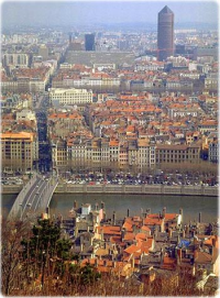


 Tél.: +33.4.37.28.74.57
Tél.: +33.4.37.28.74.57 Fax: +33.4.37.28.74.58
Fax: +33.4.37.28.74.58 E-mail :
E-mail : 





